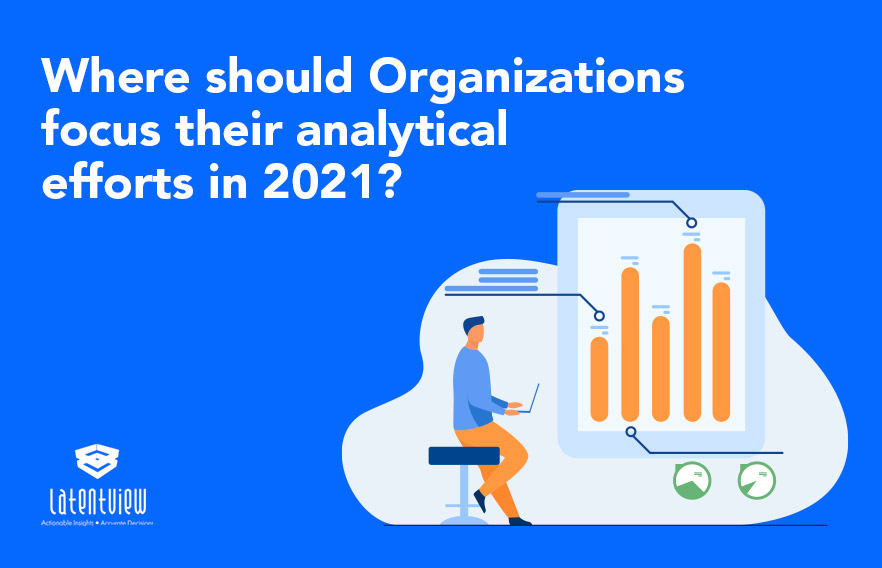With digital transformation initiatives across industries in the last six months exceeding the initiatives in the entire decade, the Covid-19 pandemic’s ongoing disruption contributed more to the adoption of analytics in 2020. The pandemic had forced many organizations to restructure both day-to-day operations and strategic initiatives. There has been enormous growth in AI and Machine Learning to counteract the challenges emerging from the “Work from home” situation. Ever-increasing demand and interest in these technologies pave the way for new trends in this space. As we prepare to head into 2021, let us look at the significant trends in analytics that will help businesses recover from the pandemic to achieve great success.
- Mobile BI
Currently, companies are under mounting pressure to deliver reliable decisions faster. Business Intelligence systems are deployed across devices such as mobiles to keep up the pace and stay ahead of the competition. Mobile BI is on the rise and is growing at a CAGR of 22.43% [1] mainly because of the following reasons:- Rise of Mobile Enterprise Application Platform (MEAP)User-friendly interfaceIncreasing acceptance of BYOD trends in OrganizationsThe rapid advancement of mobile device features
BFSI and Retail are among the most benefited verticals through Mobile BI. While retailers gain more visibility into in-store performances, wealth advisors are empowered with advanced analytics and real-time insights into portfolios.
- Graph Analytics
A relatively new/emerging field in analytics that helps in determining the strength of the relationship between entities/objects in the graph database. The entities can be customers, products, technologies, or devices. Graph analytics helps in uncovering hidden patterns and detect anomalies from unstructured data. The major use cases of graph analytics include social network analysis, fraud detection, and the most benefited verticals include BFSI, retail, and eCommerce. Graph Analytics vendors, while offering cloud solution in combination, can reap maximum benefits mainly due to scalability and easy maintenance
- Decision Intelligence
Traditionally industries have automated repetitive and time-consuming tasks, but there is still manual intervention in the decision-making process. Decision-makers are increasingly turning towards AI and ML to improve accuracy, manage resources, and mitigate limitations in an effective manner. Decision Intelligence encompasses both Predictive and Prescriptive analytics. Gartner predicts that by 2023, more than 33% of large organizations will have analysts practicing decision intelligence, including decision modeling [2]. Depending upon the industry, DI helps to improve tactical, strategic, or operational decisions. Few use cases of DI include portfolio optimization (BFSI), Price optimization (Hospitality and Airline), and Fraud detection (Ecommerce and Retail).
- Augmented Analytics
Over the past few years, Firms focused their efforts on empowering their employees with analytics practices. With the majority of data science tasks being automates, recently, the trend has shifted to successfully assisting employees and business leaders with no data expertise. Gartner has quoted, “Augmented Analytics is the future of Data and Analytics” [3]. When a user logs in to an augmented analytics system, they will get data insights relevant to their role, level, preferences, and history. This, in turn, eliminates the need to hire experienced data scientists, thereby dramatically reducing the costs and speeding up the decision-making process. An augmented analytics system continuously learns and customizes its finding depending on each user and can generate insights for the company.
- In-Memory Computing
The data stored in the primary memory of the computer can be quickly accessed and effectively used for computation than the data in secondary storage or cloud. But only a slice of data could be stored in primary memory till now. What if there was an architecture where the entirety of data is kept inside the computer’s memory rather than on their secondary storage? – Answer to the question is “In-Memory computing”. Data crunching is sped-up and analytics performance is enhanced by keeping the main memory data, thereby leading to real-time business insights. According to Domo, by 2020, 1.7 MB of data will be created every second for every person on earth [4]. To keep up with his constant upsurge of data needs and provide a better customer experience faster in-memory computing technologies should be leveraged by organizations.
- Headless Tech
73% of customers say a good experience is key in influencing their brand loyalties [5]. Customer experience is of paramount importance during pandemic times, where digital/e-commerce is the major channel used by customers for shopping. Given the digital trend is here to stay firms should revitalize their tech stack by decoupling front-end experience from that of the backend data. Functionality headless tech separates the presentation layer of firm (front end) from the critical functionalities of business such as inventory management, payment processing etc., Headless Tech helps Ecommerce transcending the digital experience through hyper-personalization, seamless integration, and enhanced omnichannel experience.
2020 is the year where the term “Digitally native company” ceases to exist. Companies are constantly updating their technology stack and are adapting to new trends in AI and ML to stay ahead of their competition. Developing skillsets and expertise in the abovementioned trends will provide a competitive edge to the companies.
Our extensive experience in developing analytics and AI solutions helped us deliver business benefits to our clients. If you would like to know more about LatentView Analytics solutions, kindly reach out to us.




